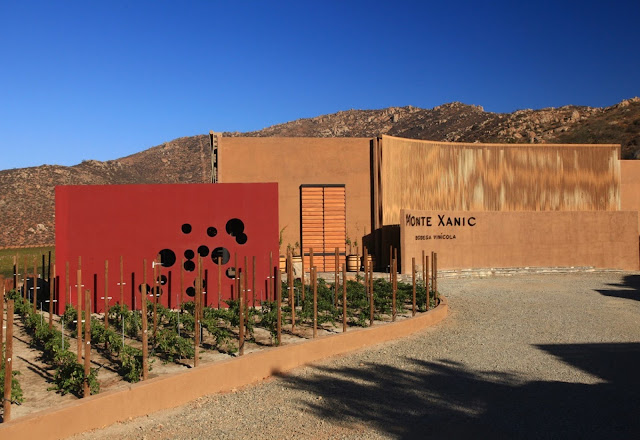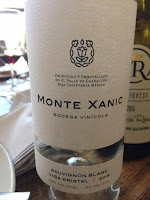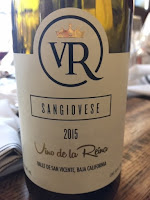Dubbed the ‘Napa Valley of Mexico’ by Forbes Magazine, Valle de Guadalupe in Baja, Mexico, is located about 215 miles south of Los Angeles, an area not generally known for its wine regions. But with global climate change and the right combination of soils, sunlight, fog, ocean breezes, and modern wine-making techniques, the wine world seems to be expanding to just about every corner of the earth. And it has arrived in Baja, the area just south of the California border where there are now 200+ bonded wineries and a “Ruta de Vino” for the thriving, and thirsty, tourist industry.
And nothing creates more buzz in the world of wine than hip, young sommeliers giving their endorsement to a region or a style. A case in point is Tresomm, a Valle de Guadalupe winery started by Los Angeles-based sommeliers Taylor Grant, Connor Mitchell, and Master Sommelier Chris Miller. Their Tresomm label has arrived at The Wine House and includes a rosé of Grignolino priced at $25.99 and an Aligote white wine at $36.99.
Tresomm is growing these two “old world” grapes in Mexico at 32 degrees latitude. Compare this with the 38 and 37 degrees latitude they are grown in in their native Piedmont (Grignolino) and Burgundy (Aligote). The latter are more “normal” vitis vinifera growing regions, which are defined by being far enough from the equator (which is too hot and close to the sun) and far enough from both the North and South Poles (too cool and far from the sun). Technically northern Mexico is still within this wine growing “belt,” but it is pushing the limits a bit.
Sealing the fate of the Mexican wine industry may be the arrival of flying winemaker Michel Rolland, the French oenologist responsible for helping to develop the “garagiste” winemakers of Bordeaux as well as the big wines of Napa, Australia, and a dozen other regions across the globe. When Rolland flies in, it’s serious wine business.
Sipping and Savoring Mexican Wine
Ms. Hunt provided a brief history of Mexican wine, as follows:
In the 1700s, Jesuit and then Dominican missionaries revived the vines, with cuttings brought from Europe. In the early 1900s Russians arrived and subsequently families from France, Spain, Italy, Switzerland, the US, and many other countries moved to Baja, bringing their preferred grapes, creating a diverse cultural and viticultural region. This is, of course, in addition to the native Mexicans whose agricultural backgrounds eventually led them to wine production.
The modern wine-making era began in the 1970s, as it did in California, and just about any variety is now grown, which is both a blessing and a curse, as there is great variety in the wines, but no one grape the region can hang its hat on. Chasselas from Switzerland grows, as well as the aforementioned Aligote and Grignolino, and there’s also Tempranillo, Sauvignon Blanc, Chardonnay, Sangiovese, Merlot, Nebbiolo, Dolcetto, Barbera, Petit Sirah, Macabeo (aka Viura) Riesling, Albarino, Viognier, Chenin Blanc, and Cabernet Sauvignon, to name some.
Our guided tasting was narrowed down by Ms. Hunt to six wines representative of the region, paired with the lovely culinary offerings of the restaurant:
- Rosé of Merlot from Cava Maciel, paired with poached bosc pear with burrata and endive
- Sauvignon Blanc from Monte Xanic, paired with diver scallop crudo with cucumber and blood orange reduction
- Two Chardonnays, one oaked version from El Cielo, one unoaked version from Vinos Lechuza, paired with seared cumin crusted seabass and coconut cauliflower
- Sangiovese from Vinos de la Reina paired with pasta arrabbiata with pecorino romana
- Tempranillo from Vena Cava paired with Santa Maria Chimichurri tri tip
All of pairings were excellent. The Monte Xanic Sauvignon Blanc (pictured above), which reminded me of the crisp versions that are being produced on the Chilean coast of South America, was the standout for me. It paired beautifully with the seafood appetizer. Another nice pairing was the Vinos de la Reina Sangiovese (pictured left) with the robust pasta arrabbiata (pictured right).
Challenges and Optimism for Mexican Wines
For more on Mexican wines, check out the following:
Wine Folly: https://winefolly.com/review/an-overview-of-mexican-wine-country/
Snooth: http://www.snooth.com/region/mexico/
Until next time,
Salud!





